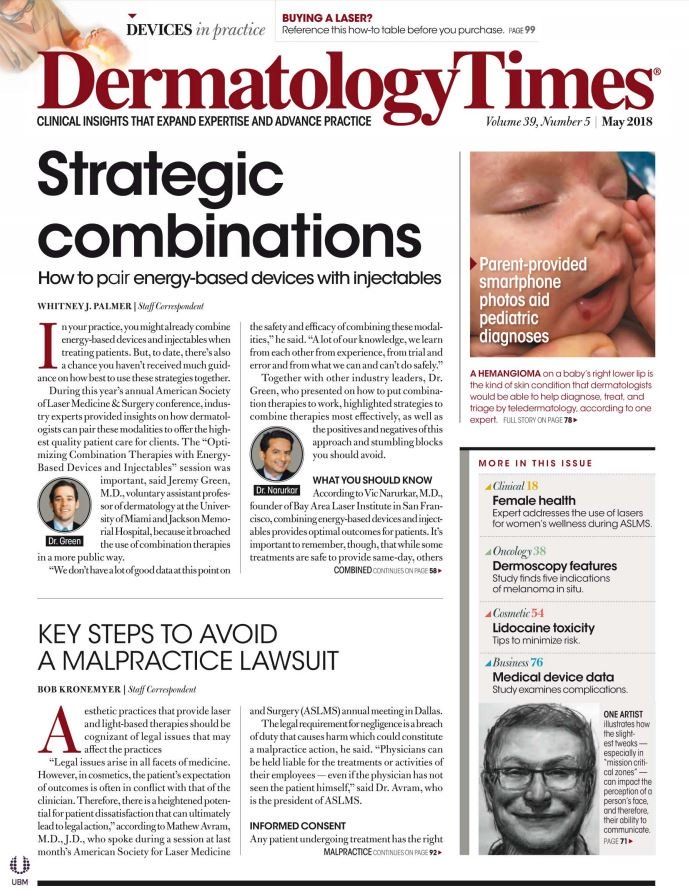- Acne
- Actinic Keratosis
- Aesthetics
- Alopecia
- Atopic Dermatitis
- Buy-and-Bill
- COVID-19
- Case-Based Roundtable
- Chronic Hand Eczema
- Chronic Spontaneous Urticaria
- Drug Watch
- Eczema
- General Dermatology
- Hidradenitis Suppurativa
- Melasma
- NP and PA
- Pediatric Dermatology
- Pigmentary Disorders
- Practice Management
- Precision Medicine and Biologics
- Prurigo Nodularis
- Psoriasis
- Psoriatic Arthritis
- Rare Disease
- Rosacea
- Skin Cancer
- Vitiligo
- Wound Care
Publication
Article
Dermatology Times
Skin microbiome: More fragile, less diverse in urban areas
Author(s):
The decrease in the diversity of skin microbiome in megacities may contribute to a higher incidence of skin diseases in more urbanized environments, researchers report.
The skin microbiome has been recognized an important indicator of the prevalence and etiology of skin diseases in an urban area, according to Korean researchers. They found more fragile networks of microbes in “megacities,” which may contribute to this higher incidence of skin disease.
“Given the higher incidence of skin diseases in more urbanized populations and its association with the skin microbiome, we questioned how the skin microbiome differed depending on the degree of urbanization,” wrote Woo Jun Sul, Ph.D., department of systems biotechnology, Chung-Ang University, Anseong, Korea, and co-investigators.
They found that skin microbiomes of 231 healthy subjects in five large cities in China varied mainly with environment and the socioeconomic status of the cities studied. Their work was published in the March 7, 2018 issue of Science Advances.
For the study, cutaneous microbiota were collected from 231 females 25 to 35 years old from the cities of Kunming (Yunnam), Xi’an (Shaanxi), and Hohhot (Neimenggu), and two megacities (each with a population of more than 10 million), namely, Beijing and Guangzhou. These cities have diverse climates and differing outdoor air quality. The subjects lived in their respective cities for at least 5 years.
Proteobacteria (34%), Actinobacteria (26%), Firmicutes (21%), and Bacteroidetes (16%) comprised more than 90% of the skin microbiomes. Greater interindividual variations were found within the skin microbiomes of non-megacities than those of megacities. In addition, there was a higher number of total observed operational taxonomic units (by cities) in non-megacities than others, which indicates that the skin microbiomes of non-megacities are composed of a more diverse pool of regional species. Microbial networks of non-megacities were also found to have more complex structures than those of megacities.
The decrease in the diversity of skin microbiome in megacities may contribute to the higher incidence of skin diseases in more urbanized environments. “We hypothesized that the skin microbiomes of megacities were assembled by more niche-based processes than those of non-megacities, which could be associated with the higher prevalence of certain skin diseases in megacities,” the investigators wrote.
REFERENCE
Kim H-J, Kim H, Kim JJ, et al. Fragile skin microbiomes in megacities are assembled by a predominantly niche-based process. Sci Adv. March 27, 2018. 4, e1701581 (2018). doi: 10.1126/sciadv.1701581

Newsletter
Like what you’re reading? Subscribe to Dermatology Times for weekly updates on therapies, innovations, and real-world practice tips.











